It looks like you're using an Ad Blocker.
Please white-list or disable AboveTopSecret.com in your ad-blocking tool.
Thank you.
Some features of ATS will be disabled while you continue to use an ad-blocker.
share:
The Runic Cross, Innerleithern (Borders):
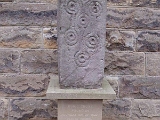
No one knows how old it is, or why it's called the Runic Cross. Are these shapes runes? Or was it a local nickname?
Julian Cope's site has an interesting article about it:
The Modern Antiquarian
Although he calls the design cup and ring marks, they look exactly like double discs to me. And interestingly here is someone else wondering about the real age of this specific symbol.

No one knows how old it is, or why it's called the Runic Cross. Are these shapes runes? Or was it a local nickname?
Julian Cope's site has an interesting article about it:
This site is usually described as a 'runic cross'. There are no runes on it and neither is it a cross. It's a cup and joined-ring marked stone almost 1 metre high and oblong in section. It sits on a modern engraved sandstone plinth dwarfed by the church immediately behind it (one of my friends has the original plinth as a feature in his extensive gardens!). The cup and ring markings are executed in the classic style- by a pecking technique which makes me think that this stone is somewhat much older than the proposed 8th century- the design certainly is. All four sides of the stone are decorated with the same pattern. I can't find any evidence to suggest that this stone actually formed part of a cross- I guess it was assumed so as it was found in the foundations of an old church which used to stand on this site. However- how many churches have been built on top of Neolithic or Bronze Age monuments?
The Modern Antiquarian
Although he calls the design cup and ring marks, they look exactly like double discs to me. And interestingly here is someone else wondering about the real age of this specific symbol.
Ramcheck
beansidhe
Logarock
reply to post by Ramcheck
Did you check out the connection between Alba (Scotland), Alba (Italy) and Albania? Apparently the alba- were a Celtic tribe that got around a good deal.
There's also the Albici, from the south east of France (Basque types?), whom I'm going to try and find out about, or Virgil's story in the Aeneid about the Trojans from Alba Longa, of whom Brutus was one, and according to some, who later (well 200BC ish) came to Britain. One of his sons was called Alban, and he was given Scotland to rule.
Not sure about either of these right now, but they're a start.
Yeah there are a lot of Alba's and Albans. I think it's a common word in many languages, in Spanish and Italian it means Dawn, in French it is Aube. In Romanian and other Indo-European languages it just means White, the same as it means in Scottish Gaelic. Although we pronounce it Ala'pa.
As demonstrated by this Runrig song
It also means white in Italian or in the language of the Alban Italians.
Albus-Latin, Albo-spanish.
I have read where the Indo connection with this word is theoretical.
reply to post by Logarock
Here is an e-copy of Skene's work (1890) and he certainly makes the Etruscan/Brutus link too. I've not got through it all, but the 'legends' chapter is really good:
A History of Ancient Alban
Also, while thinking about hovering things and Nut, I thought this character looked familiar:

It's Set/Seth, the Egyptian God. He looks awful like our beastie, I thought. I haven't found any evidence of him having rolled up feet or of hovering in the air, but he's got the same sort of head. I nearly called my son Seth -glad I didn't now!
Here is an e-copy of Skene's work (1890) and he certainly makes the Etruscan/Brutus link too. I've not got through it all, but the 'legends' chapter is really good:
A History of Ancient Alban
Also, while thinking about hovering things and Nut, I thought this character looked familiar:

It's Set/Seth, the Egyptian God. He looks awful like our beastie, I thought. I haven't found any evidence of him having rolled up feet or of hovering in the air, but he's got the same sort of head. I nearly called my son Seth -glad I didn't now!
reply to post by beansidhe
Beans,
Every time I see our "water beastie" AND that Set/Seth pic...
I think of Dolphins???
Something about the "nose" and slight smile on the face??
Are there Dolphin connections anywhere?
G
Beans,
Every time I see our "water beastie" AND that Set/Seth pic...
I think of Dolphins???
Something about the "nose" and slight smile on the face??

Are there Dolphin connections anywhere?
G
edit on 7-4-2014 by Gordi The Drummer because: I wanted to add a photo
Set's a bit weird, really.
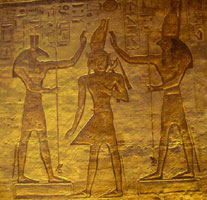
ancient egypt online
He did some very odd things and only ate lettuce(?), but the strangest thing about him was his white skin and red hair. Why was he given those characteristics? Because he represented foreign lands?

He was a storm god associated with strange and frightening events such as eclipses, thunderstorms and earthquakes. He also represented the desert and, by extension, the foreign lands beyond the desert. His glyph appears in the Egyptian words for "turmoil", "confusion", "illness", "storm" and "rage". He was considered to be very strong but dangerous, and strange. However, he was not always considered to be an evil being. Set was a friend of the dead, helping them to ascend to heaven on his ladder, and he protected the life giving oases of the desert, and was at times a powerful ally to the pharaoh and even the sun god Ra.
ancient egypt online
He did some very odd things and only ate lettuce(?), but the strangest thing about him was his white skin and red hair. Why was he given those characteristics? Because he represented foreign lands?
reply to post by Gordi The Drummer
Hi Gordi!
Well, we wondered that earlier on, but nothing definite came out of it. I don't think the beastie has a nice smile, though - it looks a bit menacing to me. It seems to be a composite of different things -we'd wondered about kelpies too. It's one of the most common symbols, and it appears across Scotland and over centuries, and as AtroxLux pointed out, it never changes. It always has the same 'hair', that smile, a snout, rolled up feet, and it's always in mid-air.
It's the one thing that's driving me a bit mad, because you would think that somewhere there would be a story about it, or a kind of memory of it, as it was so prevalent. Grr!
Hi Gordi!
Well, we wondered that earlier on, but nothing definite came out of it. I don't think the beastie has a nice smile, though - it looks a bit menacing to me. It seems to be a composite of different things -we'd wondered about kelpies too. It's one of the most common symbols, and it appears across Scotland and over centuries, and as AtroxLux pointed out, it never changes. It always has the same 'hair', that smile, a snout, rolled up feet, and it's always in mid-air.
It's the one thing that's driving me a bit mad, because you would think that somewhere there would be a story about it, or a kind of memory of it, as it was so prevalent. Grr!
Logarock
Ramcheck
beansidhe
Logarock
reply to post by Ramcheck
Did you check out the connection between Alba (Scotland), Alba (Italy) and Albania? Apparently the alba- were a Celtic tribe that got around a good deal.
There's also the Albici, from the south east of France (Basque types?), whom I'm going to try and find out about, or Virgil's story in the Aeneid about the Trojans from Alba Longa, of whom Brutus was one, and according to some, who later (well 200BC ish) came to Britain. One of his sons was called Alban, and he was given Scotland to rule.
Not sure about either of these right now, but they're a start.
Yeah there are a lot of Alba's and Albans. I think it's a common word in many languages, in Spanish and Italian it means Dawn, in French it is Aube. In Romanian and other Indo-European languages it just means White, the same as it means in Scottish Gaelic. Although we pronounce it Ala'pa.
As demonstrated by this Runrig song
It also means white in Italian or in the language of the Alban Italians.
Albus-Latin, Albo-spanish.
I have read where the Indo connection with this word is theoretical.
There's a vid out there on Hadrian's wall with info. Apparently many Romans left their names around in one way or another. Last name Loungus or Lounginus was shown. First names Albanus, Albinus ect said to be a common name among Romans. It is not clear why the makers of this film point these names out as nothing was said about any Italian Alban connection or suggestion.
Its interesting that the first invasion into Scotland had to be halted due to a revolt in Romania/Thrace. The troops were needed there.
And it seems that no one even today can come up with any logical reason for Rome invading Scotland 3 times over the years. During one of the invasions Severus himself came up with his sons to oversee the operation. He died in York. A Roman emperor actually died in Britain? Of natural causes apparently but still to fight the Scots.
It is said that Severus lost 50,000 of his men killed during this large campaign to Scottish "gorilla" tactics. Really? Doesn't sound like the sort of losses one gets in a "gorilla" campaign. Something is terribly wrong with the current interpretations of the Scottish wars. Lopsidedness being just one problem and the fixation to this day with kissing Rome's azz by British historians even. Consider here how the Germanic victories over three legions are still hailed today. They only killed about 15 to 20 thousand roman troops.
reply to post by Ramcheck
reply to post by Logarock
Why? Why do we pronounce it Alpa (like an Aberdonian)?
The first recorded use of Alba comes from Constantine Mac Aed (there is no way that was his real first name!), the King of Alba in 900 and something AD. Look who he is:

He's Cinead's grandson, or Kenneth MacAlpin as we know him now. Kenneth, son of Alpin. Alpa? Is this another misheard and misrecorded discrepancy in our history?
Also, another source tells the same old story of the Egyptian journey, St. Cathroe of Metz, a Scottish monk living in the 900's.
And ooh, who knew?
reply to post by Logarock
Yeah there are a lot of Alba's and Albans. I think it's a common word in many languages, in Spanish and Italian it means Dawn, in French it is Aube. In Romanian and other Indo-European languages it just means White, the same as it means in Scottish Gaelic. Although we pronounce it Ala'pa.
Why? Why do we pronounce it Alpa (like an Aberdonian)?
The first recorded use of Alba comes from Constantine Mac Aed (there is no way that was his real first name!), the King of Alba in 900 and something AD. Look who he is:

He's Cinead's grandson, or Kenneth MacAlpin as we know him now. Kenneth, son of Alpin. Alpa? Is this another misheard and misrecorded discrepancy in our history?
Also, another source tells the same old story of the Egyptian journey, St. Cathroe of Metz, a Scottish monk living in the 900's.
And ooh, who knew?
Cathróe was fostered with his paternal uncle Beanus (Saint Bean; there were several Gaelic saints of this name).
reply to post by Logarock
They make for bizarre reading. Why are there so many Roman forts in Aberdeenshire? Where are the bones of 50,000 Roman soldiers buried? Where are the Pict stones commemorating the glorious slaying of 50,000 enemy invaders?
The stories just don't make sense.
It is said that Severus lost 50,000 of his men killed during this large campaign to Scottish "gorilla" tactics. Really? Doesn't sound like the sort of losses one gets in a "gorilla" campaign. Something is terribly wrong with the current interpretations of the Scottish wars. Lopsidedness being just one problem and the fixation to this day with kissing Rome's azz by British historians even. Consider here how the Germanic victories over three legions are still hailed today. They only killed about 15 to 20 thousand roman troops.
They make for bizarre reading. Why are there so many Roman forts in Aberdeenshire? Where are the bones of 50,000 Roman soldiers buried? Where are the Pict stones commemorating the glorious slaying of 50,000 enemy invaders?
The stories just don't make sense.
Gordi The Drummer
reply to post by beansidhe
Beans,
Every time I see our "water beastie" AND that Set/Seth pic...
I think of Dolphins???
Something about the "nose" and slight smile on the face??
Are there Dolphin connections anywhere?
Gedit on 7-4-2014 by Gordi The Drummer because: I wanted to add a photo
IMHO there has to be, the 'Beastie' is a Dolphin. They are prominent on the Scottish coast, around the Islands and northwards, as you know, obviously. The Phoenicians would have tales of them swimming along with their boats. They would have been washed ashore often, perhaps more prominently in the final remnants of the Ice Age, who knows? But yes for me the Beastie is most definitely a Dolphin. What is represents on stone glyphs on the other hand, is anyone's guess.
edit on 8/4/14 by Ramcheck because: typo
beansidhe
reply to post by Logarock
It is said that Severus lost 50,000 of his men killed during this large campaign to Scottish "gorilla" tactics. Really? Doesn't sound like the sort of losses one gets in a "gorilla" campaign. Something is terribly wrong with the current interpretations of the Scottish wars. Lopsidedness being just one problem and the fixation to this day with kissing Rome's azz by British historians even. Consider here how the Germanic victories over three legions are still hailed today. They only killed about 15 to 20 thousand roman troops.
They make for bizarre reading. Why are there so many Roman forts in Aberdeenshire? Where are the bones of 50,000 Roman soldiers buried? Where are the Pict stones commemorating the glorious slaying of 50,000 enemy invaders?
The stories just don't make sense.
Yes they should be finding large battle fields or any number of smaller battle fields with all sorts of archeology. There also seems to be a lack of Celtic weapons found.
However all of the activity they do know off certainly suggests a major effort took place on the Romans part and their response with forts and finally two walls does strongly suggest the warring nature of their foe.
We should consider the possibility that Scotland became the combat zone, an arena of sorts for Celts from everywhere, perhaps staging in Ireland and moving over in mass under the Irish hero's and high kings who probably considered Scotland to be part of Ireland and as some suggest all of Britain under their rule or tribute before Rome. These early Irish ruling families were well known to be bloody and warlike for the large part.
Consider the possibility that Celts and Gauls from all over the oppressive Roman empire could resort to Ireland and the possibilities the island provided for staging large armies into Scotland as a joint unified Celtic resistance front. History tells us that when the Romans finally withdrew from Britain back to the mainland the Irish no less invaded France with a large army to aid the Gauls. This is also around the time that Germanic tribes were forcing themselves on the western flank of Gaul in sort of a pincer move, Franks from the east and armies from the north.
beansidhe
reply to post by Ramcheck
reply to post by Logarock
Yeah there are a lot of Alba's and Albans. I think it's a common word in many languages, in Spanish and Italian it means Dawn, in French it is Aube. In Romanian and other Indo-European languages it just means White, the same as it means in Scottish Gaelic. Although we pronounce it Ala'pa.
Why? Why do we pronounce it Alpa (like an Aberdonian)?
The first recorded use of Alba comes from Constantine Mac Aed (there is no way that was his real first name!), the King of Alba in 900 and something AD. Look who he is:
He's Cinead's grandson, or Kenneth MacAlpin as we know him now. Kenneth, son of Alpin. Alpa? Is this another misheard and misrecorded discrepancy in our history?
Also, another source tells the same old story of the Egyptian journey, St. Cathroe of Metz, a Scottish monk living in the 900's.
And ooh, who knew?
Cathróe was fostered with his paternal uncle Beanus (Saint Bean; there were several Gaelic saints of this name).
Man its really hard to tell this from an Irish list. Seriously look at them. Many of the names are the same. The old Neill boys and girls. And look at the list there is a Welsh AP in there bottom left of the one you posted.
Irish Kings list
reply to post by Logarock
But they still can't agree where the battle of Mons Graupius took place, Agricola's campaign. I mean, it should be obvious! Place names, legend, weapons and shields found. But no, nothing; no one can say for certain that this event even happened at all.
It's an interesting suggestion you make there. Scotland was never under Roman control. Rome 'conquered' the rest of Europe practically, north Africa, but couldn't fight off a couple of Picts? Ok, Scottish terrain might make for some difficulties, but come on - a legion of 50,000 (plus survivors) can't subdue civilian clansmen?
Unless, as you say, these weren't all civilians but a constant stream of trained warrior Celts being 'fed' in to Scotland from Ireland, fighting alongside the Picts. That's worth considering, definitely. And the Romans would be none the wiser who was who.
Consider the possibility that Celts and Gauls from all over the oppressive Roman empire could resort to Ireland and the possibilities the island provided for staging large armies into Scotland as a joint unified Celtic resistance front. History tells us that when the Romans finally withdrew from Britain back to the mainland the Irish no less invaded France with a large army to aid the Gauls. This is also around the time that Germanic tribes were forcing themselves on the western flank of Gaul in sort of a pincer move, Franks from the east and armies from the north.
But they still can't agree where the battle of Mons Graupius took place, Agricola's campaign. I mean, it should be obvious! Place names, legend, weapons and shields found. But no, nothing; no one can say for certain that this event even happened at all.
It's an interesting suggestion you make there. Scotland was never under Roman control. Rome 'conquered' the rest of Europe practically, north Africa, but couldn't fight off a couple of Picts? Ok, Scottish terrain might make for some difficulties, but come on - a legion of 50,000 (plus survivors) can't subdue civilian clansmen?
Unless, as you say, these weren't all civilians but a constant stream of trained warrior Celts being 'fed' in to Scotland from Ireland, fighting alongside the Picts. That's worth considering, definitely. And the Romans would be none the wiser who was who.
Hi op. nice thread. I love looking at aincient symbols and artefacts, pondering over the meaning of the mysterious.
The first picture, V rod, looks to me like a depiction of the souls travel down to earth and back up again... The knotted area could represent the quantum space/connection of the material realm.
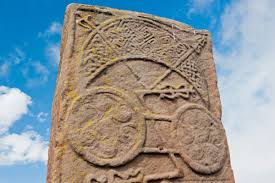

The carved balls with spirals on could be a representation of black holes.

The dolphin picture also looks kind of like a sea horse...
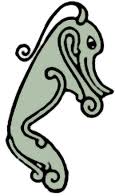
Which also looks like the dark horse cloud of Orion.
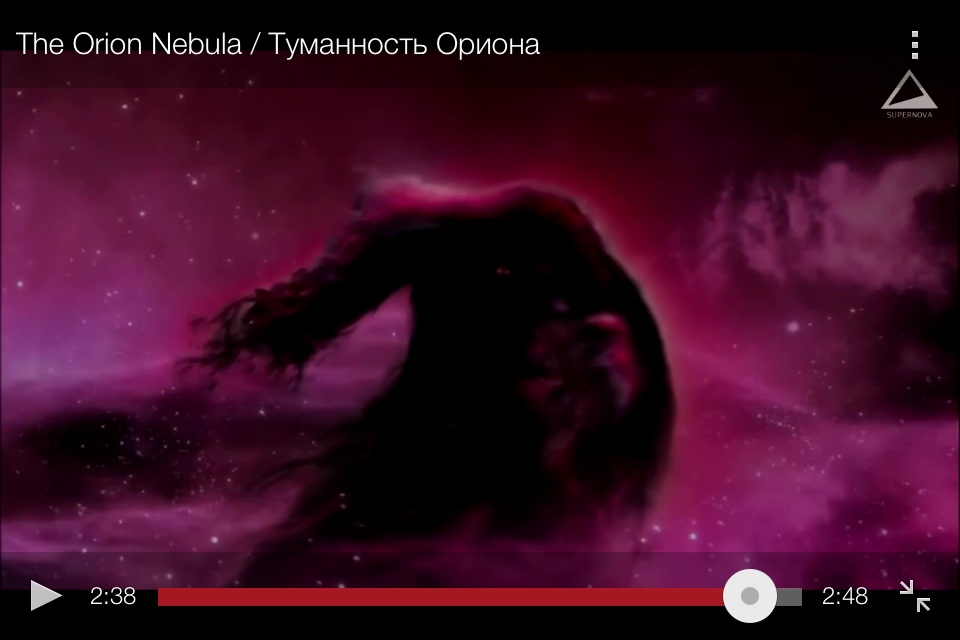
which also kind of looks like the hippocampus in the brain.
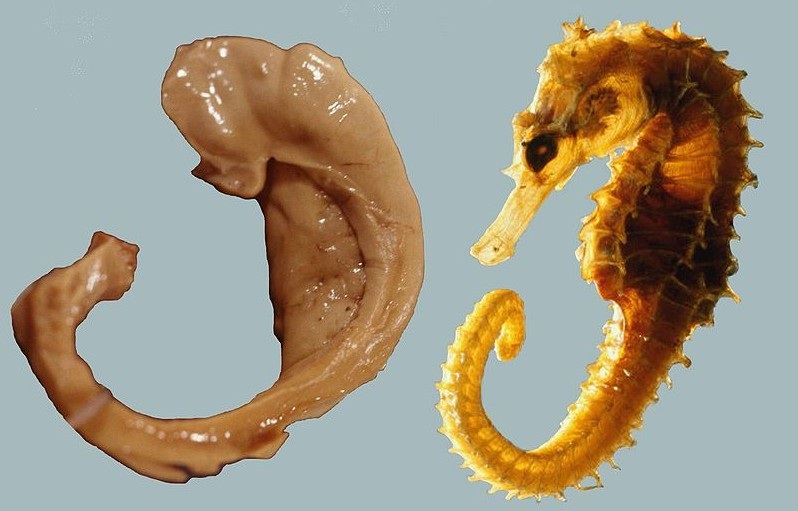
The Z rod, cosmic ray...

The first picture, V rod, looks to me like a depiction of the souls travel down to earth and back up again... The knotted area could represent the quantum space/connection of the material realm.


The carved balls with spirals on could be a representation of black holes.

The dolphin picture also looks kind of like a sea horse...

Which also looks like the dark horse cloud of Orion.

which also kind of looks like the hippocampus in the brain.

The Z rod, cosmic ray...

edit on 9-4-2014 by Wifibrains because: (no reason given)
reply to post by Wifibrains
Hi Wifi, thank you, I'm glad you're enjoying it.
And thanks for all your input. The Picts did show seahorses on the stones, and they are quite specifically seahorses:

The beastie is some sort of composite -dolphinesque thing, and we're still wondering about it's meaning. I didn't know about the shape of the hippocampus (I've never seen a real one!) - I wonder if that's why sea-horses were thought of as important creatures, other than just their appearance? Your suggestions are really good, and we're trying to find similar motifs on other stones/artwork to see if we can pick apart what they might mean.
So far a lot of the motifs have an Etruscan/Phoenician/Thracian influence and our thinking is in the direction that the Celtic tribes absorbed these images whilst retaining their own unique style. The Picts in particular seem to have been adept at adopting symbols.
It's great to get a fresh perspective on this, so feel free to add anything to the pot.
Hi Wifi, thank you, I'm glad you're enjoying it.
And thanks for all your input. The Picts did show seahorses on the stones, and they are quite specifically seahorses:

The beastie is some sort of composite -dolphinesque thing, and we're still wondering about it's meaning. I didn't know about the shape of the hippocampus (I've never seen a real one!) - I wonder if that's why sea-horses were thought of as important creatures, other than just their appearance? Your suggestions are really good, and we're trying to find similar motifs on other stones/artwork to see if we can pick apart what they might mean.
So far a lot of the motifs have an Etruscan/Phoenician/Thracian influence and our thinking is in the direction that the Celtic tribes absorbed these images whilst retaining their own unique style. The Picts in particular seem to have been adept at adopting symbols.
It's great to get a fresh perspective on this, so feel free to add anything to the pot.
Logarock
beansidhe
reply to post by Ramcheck
reply to post by Logarock
Yeah there are a lot of Alba's and Albans. I think it's a common word in many languages, in Spanish and Italian it means Dawn, in French it is Aube. In Romanian and other Indo-European languages it just means White, the same as it means in Scottish Gaelic. Although we pronounce it Ala'pa.
Why? Why do we pronounce it Alpa (like an Aberdonian)?
The first recorded use of Alba comes from Constantine Mac Aed (there is no way that was his real first name!), the King of Alba in 900 and something AD. Look who he is:
He's Cinead's grandson, or Kenneth MacAlpin as we know him now. Kenneth, son of Alpin. Alpa? Is this another misheard and misrecorded discrepancy in our history?
Also, another source tells the same old story of the Egyptian journey, St. Cathroe of Metz, a Scottish monk living in the 900's.
And ooh, who knew?
Cathróe was fostered with his paternal uncle Beanus (Saint Bean; there were several Gaelic saints of this name).
Man its really hard to tell this from an Irish list. Seriously look at them. Many of the names are the same. The old Neill boys and girls. And look at the list there is a Welsh AP in there bottom left of the one you posted.
Irish Kings list
It's really hard, and I think you would need some kind of expertise in this field to make good headway. I just don't have enough experience in this area to make sense of it. The names in the Pictish Chronicles seem interchangeable at times. Here's just one example, Tristan from the King Arthur story:
There are obscure aspects to Tristan; his ancient Cornish, Welsh or Breton name appears to mean "clanking swords," while the more recent Romance languages version, including French, is interpreted as "sadness" in keeping with the Tristan and Iseult romantic tale. Tristan (Trystan, Drystan) is almost certainly taken from the legendary Pictish Chronicle Drest or Drust which frequently appears as the name of several ancient Pictish kings in modern Scotland far to the northwest; Drustanus is merely Drust rendered into Latin. It may have originated from an ancient legend regarding a Pictish king who slew a giant in the distant past, which had spread throughout the isles, or the name may also come from a sixth-century Pictish saint who bore another form of the name – or it may have migrated upwards from the southwest due to the fame of the legends of King Arthur. In addition, there was a Tristan who bore witness to a legal document at the Swabian Abbey of Saint Gall in 807AD.
Another strange aspect is his kingdom, Lyonesse, for whose existence there is no evidence. However, there were two places called Leonais: one in Brittany, the other the Old French transcription of Lothian. However, the Isles of Scilly have also been proposed to be this place, since they were possibly one island until Roman times and several islands are interconnected at low tide. Regardless, Tristan being a prince of Lothian would make his name more sensible, Lothian being on the borderlands of the Pictish High-Kingship (and once was a part of Pictish territory; Tristan may in fact have been a Pictish prince under a British King). There are also records of a Turstan Crectune, whose name gave the Lothian village of Crichton its name.
reply to post by beansidhe
The serpent Z rod in that last pic you posted stood out to me... I like the fact they have put these two symbols together as it correlates to something I have been looking at recently...
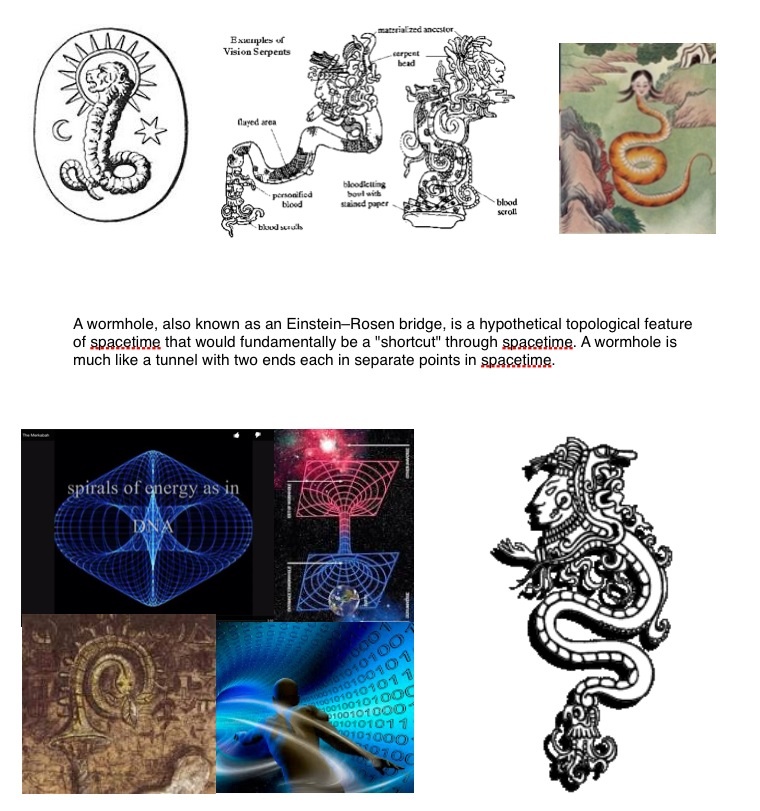


www.abovetopsecret.com...
The serpent Z rod in that last pic you posted stood out to me... I like the fact they have put these two symbols together as it correlates to something I have been looking at recently...



www.abovetopsecret.com...
edit on 10-4-2014 by Wifibrains because: (no reason given)
reply to post by Wifibrains
Yes, it could easily be something along those lines. Earlier we were talking (writing) about the stones -often called Druid stones in local legend. The Druids, it is claimed by Hippolytus, were trained by a mystic from Thrace:
There are a number of sources who claim that the Druids in Scotland were equal to the Persians in their knowledge of occult wisdom, and one historian (McHardy) makes the suggestion that Orkney could have been a spiritual training camp for Britain and the surrounding areas. Part of depicting (I always find that funny) these stones is trying to re-shape our own understanding of who the Picts were, and what Roman/Celtic Europe was actually like. The more we uncover and slowly piece together, the more it becomes apparent that our preconception of bronze age life isn't really accurate. So the concepts that you are thinking about are easily possible with the Picts; that they would have known of these concepts and tried to portray them.
Excellent thread, by the way
Yes, it could easily be something along those lines. Earlier we were talking (writing) about the stones -often called Druid stones in local legend. The Druids, it is claimed by Hippolytus, were trained by a mystic from Thrace:
“And the Celtic Druids investigated to the very highest point the Pythagorean philosophy, after Zamolxis, by birth a Thracian, a servant of Pythagoras, became to them the originator of this discipline. Now after the death of Pythagoras, Zamolxis, repairing thither, became to them the originator of this philosophy. The Celts esteem these as prophets and seers, on account of their foretelling to them certain (events), from calculations and numbers by the Pythagorean art”.
(Hippolytus. “Philosophumena” XXII) "
There are a number of sources who claim that the Druids in Scotland were equal to the Persians in their knowledge of occult wisdom, and one historian (McHardy) makes the suggestion that Orkney could have been a spiritual training camp for Britain and the surrounding areas. Part of depicting (I always find that funny) these stones is trying to re-shape our own understanding of who the Picts were, and what Roman/Celtic Europe was actually like. The more we uncover and slowly piece together, the more it becomes apparent that our preconception of bronze age life isn't really accurate. So the concepts that you are thinking about are easily possible with the Picts; that they would have known of these concepts and tried to portray them.
Excellent thread, by the way
beansidhe
Logarock
beansidhe
reply to post by Ramcheck
reply to post by Logarock
Yeah there are a lot of Alba's and Albans. I think it's a common word in many languages, in Spanish and Italian it means Dawn, in French it is Aube. In Romanian and other Indo-European languages it just means White, the same as it means in Scottish Gaelic. Although we pronounce it Ala'pa.
Why? Why do we pronounce it Alpa (like an Aberdonian)?
The first recorded use of Alba comes from Constantine Mac Aed (there is no way that was his real first name!), the King of Alba in 900 and something AD. Look who he is:
He's Cinead's grandson, or Kenneth MacAlpin as we know him now. Kenneth, son of Alpin. Alpa? Is this another misheard and misrecorded discrepancy in our history?
Also, another source tells the same old story of the Egyptian journey, St. Cathroe of Metz, a Scottish monk living in the 900's.
And ooh, who knew?
Cathróe was fostered with his paternal uncle Beanus (Saint Bean; there were several Gaelic saints of this name).
Man its really hard to tell this from an Irish list. Seriously look at them. Many of the names are the same. The old Neill boys and girls. And look at the list there is a Welsh AP in there bottom left of the one you posted.
Irish Kings list
It's really hard, and I think you would need some kind of expertise in this field to make good headway. I just don't have enough experience in this area to make sense of it.
Well I don't seek to make any headway other than it looks like some strong relationships and intermarrying between the royals of Irish, Welsh, Scotts, whoever in the Islands This isn't much of a stretch really.
Here are some comparisons between names on the two lists. The 1st name is on the Scottish list the 2nd on the Irish list.
Artgal-Art Imlech
Aed Findliath-Aed Allan
Domnall-Domnall Mac Aedo
Mael Muire-Mael Sechnaill Mac Domnaill
reply to post by beansidhe
Here is a side by side comparison of the Pictish beast and the horse head nebula.
It's pretty good.
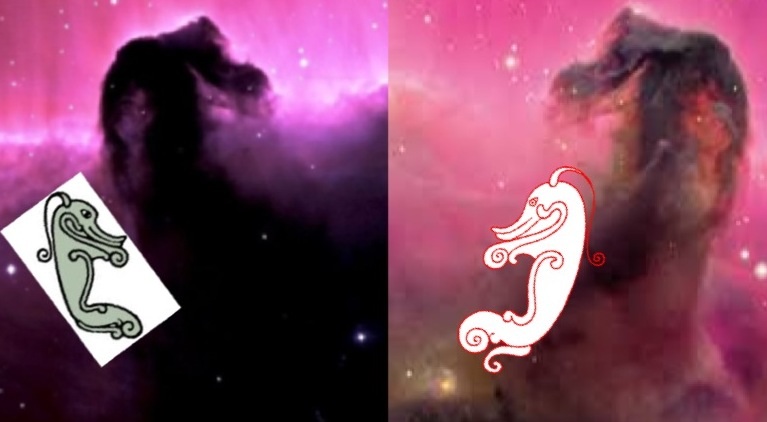
en.wikipedia.org...
Couldn't agree with you more.
Here is a side by side comparison of the Pictish beast and the horse head nebula.
It's pretty good.

en.wikipedia.org...
The more we uncover and slowly piece together, the more it becomes apparent that our preconception of bronze age life isn't really accurate.
Couldn't agree with you more.
edit on 10-4-2014 by Wifibrains because: (no reason given)
new topics
-
This is our Story
General Entertainment: 11 minutes ago -
President BIDEN Vows to Make Americans Pay More Federal Taxes in 2025 - Political Suicide.
2024 Elections: 2 hours ago -
Ode to Artemis
General Chit Chat: 3 hours ago -
Ditching physical money
History: 6 hours ago -
One Flame Throwing Robot Dog for Christmas Please!
Weaponry: 6 hours ago -
Don't take advantage of people just because it seems easy it will backfire
Rant: 7 hours ago -
VirginOfGrand says hello
Introductions: 8 hours ago -
Should Biden Replace Harris With AOC On the 2024 Democrat Ticket?
2024 Elections: 8 hours ago -
University student disciplined after saying veganism is wrong and gender fluidity is stupid
Education and Media: 11 hours ago
top topics
-
Hate makes for strange bedfellows
US Political Madness: 17 hours ago, 20 flags -
University student disciplined after saying veganism is wrong and gender fluidity is stupid
Education and Media: 11 hours ago, 12 flags -
Police clash with St George’s Day protesters at central London rally
Social Issues and Civil Unrest: 14 hours ago, 9 flags -
President BIDEN Vows to Make Americans Pay More Federal Taxes in 2025 - Political Suicide.
2024 Elections: 2 hours ago, 8 flags -
TLDR post about ATS and why I love it and hope we all stay together somewhere
General Chit Chat: 15 hours ago, 7 flags -
Should Biden Replace Harris With AOC On the 2024 Democrat Ticket?
2024 Elections: 8 hours ago, 6 flags -
Don't take advantage of people just because it seems easy it will backfire
Rant: 7 hours ago, 4 flags -
One Flame Throwing Robot Dog for Christmas Please!
Weaponry: 6 hours ago, 4 flags -
God lived as a Devil Dog.
Short Stories: 12 hours ago, 3 flags -
Ditching physical money
History: 6 hours ago, 3 flags
active topics
-
Lawsuit Seeks to ‘Ban the Jab’ in Florida
Diseases and Pandemics • 29 • : Cre8chaos79 -
TLDR post about ATS and why I love it and hope we all stay together somewhere
General Chit Chat • 8 • : Cre8chaos79 -
This is our Story
General Entertainment • 0 • : BrotherKinsMan -
New whistleblower Jason Sands speaks on Twitter Spaces last night.
Aliens and UFOs • 46 • : baablacksheep1 -
Hate makes for strange bedfellows
US Political Madness • 38 • : Terpene -
British TV Presenter Refuses To Use Guest's Preferred Pronouns
Education and Media • 126 • : Asher47 -
Why to avoid TikTok
Education and Media • 17 • : mooncake -
The Superstition of Full Moons Filling Hospitals Turns Out To Be True!
Medical Issues & Conspiracies • 22 • : mooncake -
University student disciplined after saying veganism is wrong and gender fluidity is stupid
Education and Media • 23 • : BigDuckEnergy -
President BIDEN Vows to Make Americans Pay More Federal Taxes in 2025 - Political Suicide.
2024 Elections • 3 • : BingoMcGoof
